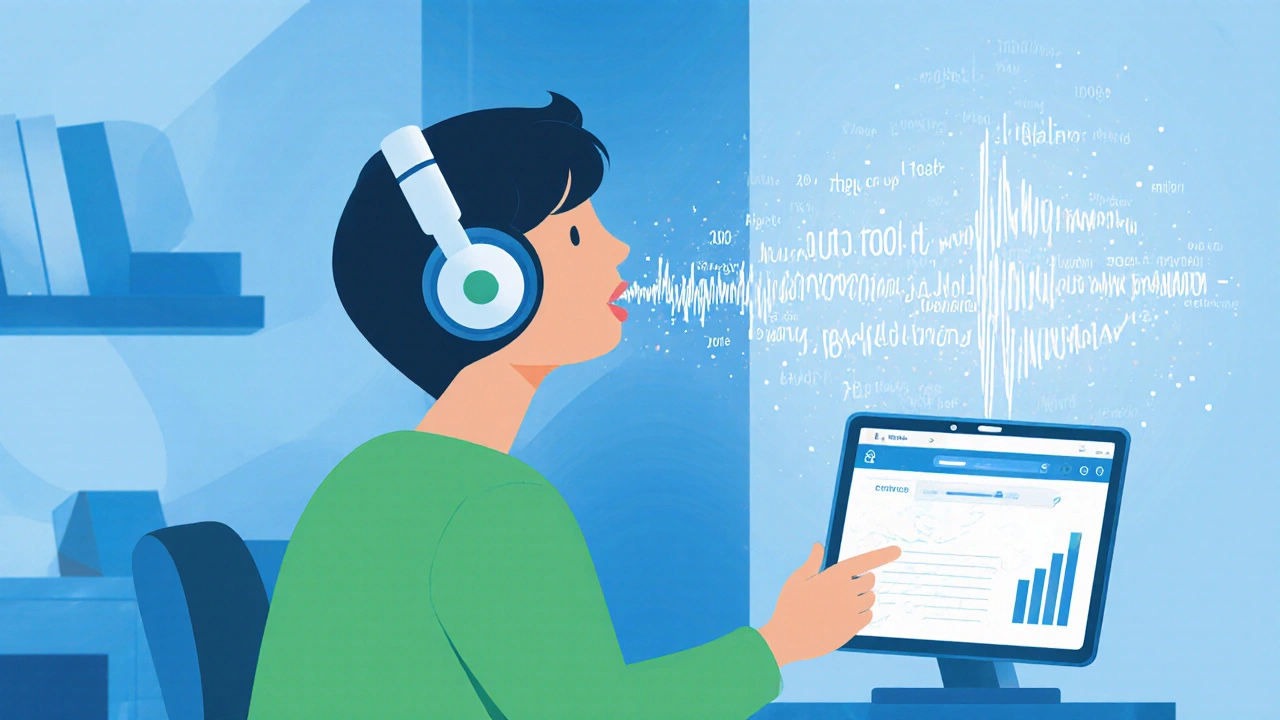English Fluency Progress Tracker
Your Fluency Journey
Follow these proven steps to develop English fluency. Track your progress and see how far you've come!
0% Fluent
Current Milestone
Start by completing Step 1
Vocabulary Building
Learn high-frequency words and collocations for natural conversations.
Pronunciation Practice
Master individual sounds, word stress, and sentence intonation.
Daily Listening & Shadowing
Improve rhythm and muscle memory through shadowing exercises.
Speaking Practice
Engage in conversations with native speakers or tutors.
Technology Tools
Use apps for speech recognition and pronunciation feedback.
Immersive Environment
Surround yourself with English through media and reading.
Weekly Activity Log
Track your weekly activities to stay motivated and measure progress.
Your Progress Summary
Want to stop stumbling over words and start chatting like a native? The good news is you don’t need a magic potion - just a clear plan, the right habits, and a bit of patience. Below you’ll find a step‑by‑step roadmap that turns everyday moments into fluency‑boosting practice.
Understand What Fluency Actually Means
Fluency isn’t about perfect grammar; it’s the ability to convey ideas quickly and naturally. In the CEFR framework, reaching B2 or C1 level means you can discuss complex topics without hunting for words. English fluency is the skill of speaking English smoothly, with appropriate speed, accuracy, and confidence. Knowing this helps you set realistic milestones instead of chasing perfection.
Build a Strong Vocabulary Base
Words are the building blocks of conversation. Instead of cramming long lists, focus on high‑frequency word families and collocations. For example, learn "make a decision" and "make an effort" together - this saves mental load during speech.
- Pick a theme (e.g., travel, business) and collect 20‑30 core terms each week.
- Use spaced‑repetition apps to review them in context, not isolation.
- Create personal flashcards with a sentence you’re likely to say.
Vocabulary the set of words you actively use in speaking and listening grows faster when it’s tied to real situations.
Master Pronunciation and Rhythm
Even a perfect word bank falls flat if the sounds don’t match native patterns. Concentrate on three elements:
- Individual sounds - diphthongs like /aɪ/ in "time" or the voiced /ð/ in "this".
- Word stress - "REcord" (noun) vs. "reCORD" (verb).
- Sentence intonation - rising tone for questions, falling for statements.
Record yourself and compare with native clips. Small adjustments quickly boost intelligibility.
Pronunciation the way sounds are produced and linked together in speech improves dramatically with focused, short drills.

Daily Listening & Shadowing technique a method where you repeat a native speaker’s audio in real time
Spend 10‑15 minutes each morning shadowing a podcast, TED talk, or YouTube video. The process:
- Play a short sentence (2‑3 seconds).
- Pause and repeat it aloud, matching rhythm and stress.
- Gradually reduce pauses until you can follow without stopping.
This trains muscle memory and helps you think in English rather than translating.
Speak with Real People - Language exchange a reciprocal conversation partnership between a learner and a native speaker & Tutors
Interaction is non‑negotiable. Use platforms like Tandem, HelloTalk, or local meetup groups. Tips for making the most of each session:
- Set a clear goal (e.g., practice ordering food, discuss a news article).
- Rotate between you speaking and your partner correcting.
- Ask for one specific feedback point - too many corrections overwhelm.
If you need structured guidance, a 1‑on‑1 online tutor can provide a tailored feedback loop a cyclical process of speaking, receiving correction, and practicing again. Even 30 minutes a week keeps you accountable.
Leverage Technology - Speech recognition app software that evaluates spoken English against native models
Tools like ELSA Speak, Google’s Speech‑to‑Text, or the free app “VoiceCoach” give instant pronunciation scores. Use them to:
- Identify the sounds you mispronounce the most.
- Practice short phrases until the app shows >90% accuracy.
- Track progress over weeks with built‑in analytics.
Combine app feedback with a human mentor for the best results.
Create an Immersive Environment
Surround yourself with English, even when you’re not actively studying. Simple habits:
- Change phone and computer language settings.
- Watch one episode of a series with subtitles, then repeat without them.
- Read aloud from news sites or novels for 5 minutes before bed.
Immersion the practice of constantly exposing yourself to English input and output speeds up the internalization of patterns.
Track Progress and Stay Motivated
Without visible improvement, motivation fades. Use a simple tracking sheet:
| Method | Time Commitment (per week) | Typical Cost | Best For |
|---|---|---|---|
| Language exchange | 2-3 hrs | Free‑or‑low | Real‑world conversation practice |
| Shadowing + apps | 3-5 hrs | $0-$30 (app) | Pronunciation & rhythm |
| Online tutor + feedback loop | 1-2 hrs | $15-$45 per session | Targeted correction & confidence |
Mark each week’s activity, note new words used, and record a 1‑minute monologue. Listening back reveals subtle improvements.
When you see a steady rise in your self‑rating-say, moving from “I need pauses” to “I can speak for 2 minutes straight”-the confidence boost fuels the next round of practice.
Frequently Asked Questions
How long does it usually take to become fluent?
For most adult learners, reaching a comfortable B2 level takes 600‑800 hours of focused practice. Consistency (30‑45 minutes daily) matters more than occasional marathon sessions.
Is it better to study grammar or speak first?
Focus on speaking early. Grammar can be refined later through feedback. A solid foundation of useful phrases and correct pronunciation prevents fossilizing bad habits.
Can I improve fluency without a native partner?
Yes. Shadowing, speech‑recognition apps, and self‑recording are effective solo methods. Pair them with occasional tutor sessions for targeted correction.
What’s the best time of day for speaking practice?
When you’re alert but not rushed-often morning or early evening. Consistency outweighs the exact hour, so pick a slot you can keep.
How can I stop feeling nervous when I speak?
Treat every conversation as a learning experiment. Focus on the message, not perfection. Small, low‑stakes interactions (ordering coffee, greeting a neighbor) build confidence gradually.

Write a comment